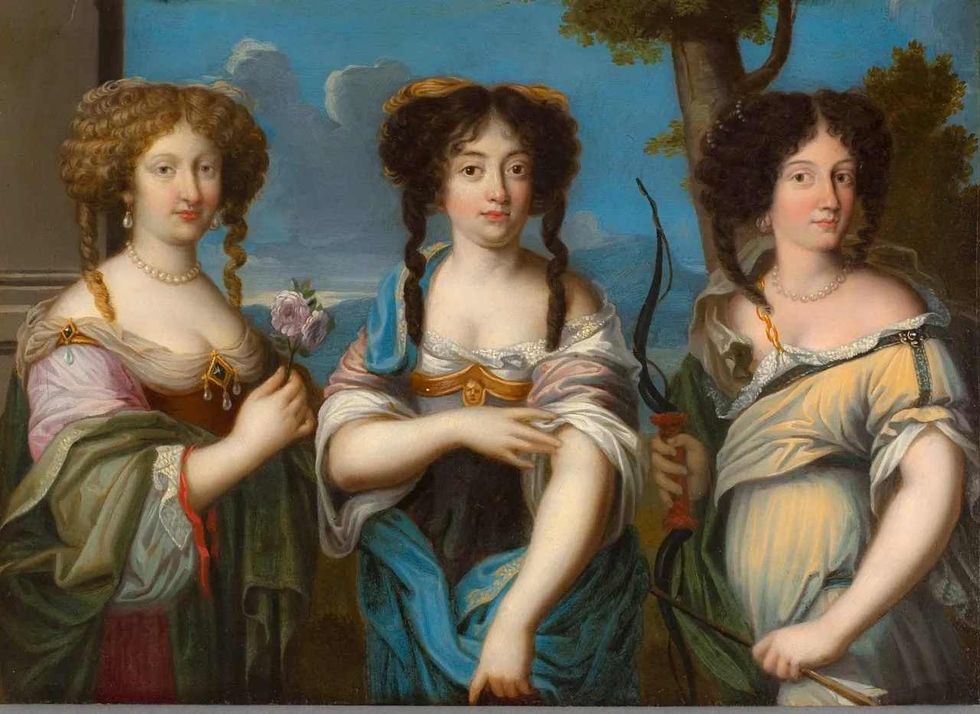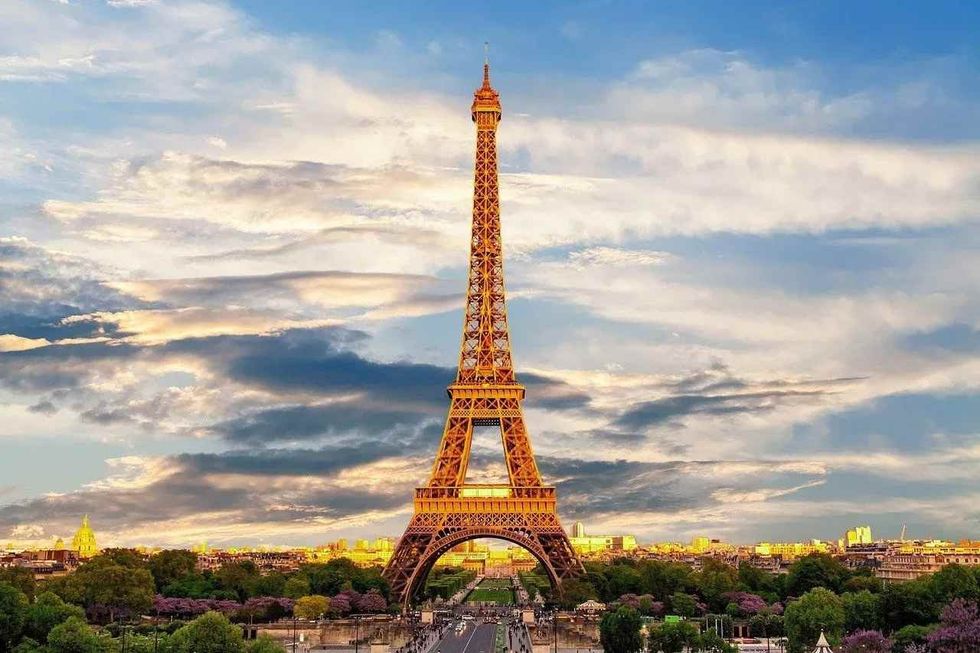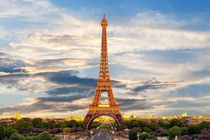35 French Art Facts That Aspiring Artists And Designers Should Know

All the artistic work done in the country of France constitutes the French art that people so much love and adore.
French art can be anything from visual or plastic arts in woodwork, architecture, or textile that are associated with France. There is a long and outstanding list of French art history dating back to ancient times, that every person in the world needs to know about, like the Baroque and Gothic styles are believed to be originated in France.
During the period of Romanesque art, it was limited to courts and churches. The manuscript illumination and several other arts used during this period involved the church.
Major arts of this period used complicated processes, contrasting to the art used subsequently after this time. Next is Gothic art.
It is said that the French invented Gothic art which originated in the northern part of France in the 12th century. Abbey of St Dennis was the first Gothic building of that period.
This building was the place where most French kings were buried. Most cathedrals and stain glass used in most buildings' windows during this period can also be credited to Gothic art.
Gothic art was actually pretty simple as it used the observation of nature in all its artistic forms and mixed it with precision and simplicity. Miniature painting was discovered during this time period and this technique was later adopted by the Italians.
All the basilicas and cathedrals all over the world have Gothic art and France is to thank for providing this unique form of art to Gothic cathedrals. Gothic art was also earlier known as French art.
The next French art form is Baroque art. As the 17th century arrived, French art became associated with nationalism and antiquity.
All these led to art formalization and art was produced towards the state. During this period, art institutions were opened to give chances to French artists, French citizens, and even artists from other parts of the world.
The 18th century in France saw the development of various new styles of contemporary art. The art done during this period was simple and delicately done. There was interest in new styles in the world which gave rise to newer simpler designs and techniques. A more neoclassical style was born during this time.
In the 19th century, French artists found interest in impressive and beautiful visual arts. Sculpture, images, and paintings during this time got a new effect from the artists by culminating in various different designs.
Hands were not used much during this period as machine work started replacing the word by hand. However, this reduced the decorations as machines were not as capable as the hand of an artist was. Working with hands was more inclined towards creativity and design form.
In the 20th century, French art continued to bloom in the country as well as in different parts of the world. French people became known all over the world for their art and culture.
France has now grown a lot in its art and artists, and the tourism sector has been helped a lot due to this.
People from all over the world throng the country to enjoy some French art and culture. The 19th century and 20th century periods were the turning points to shape modern art 0f France, making it a tourist destination.
Going back to the history of the country, around 50% of the population of the country are Christians, and of them, most are Catholics. The number of Christians present in the country is advocated by the numerous Gothic cathedrals and basilicas erected by the French.
Tourists visit these cathedrals not just to pray, but to bask in their magnificence too.
France is the connoisseur of many art forms and artistic works across the world. France is a major player in art and this makes France one of the coolest and busiest destinations in the world.
Museums and art events are very common in the country and French people visit them quite often. French artists like Claude Monet, Paul Cezanne, Paul Gauguin, August Renoir, Camille Pissarro, Edgar Degas, Édouard Manet, Charles-François Daubigny, Eugène Delacroix, and Marcel Duchamp have helped shaping the modern world of art that we see today.
Under the state support of France, sculpture, music, painting, dance, photography, architecture, and film grew a lot. Art has always been respected in the country of France and that can be well seen in their culture.
As the French Kingdom started getting recognized by the 12th century, French architecture became more popular than visual art. The Rennaisance period saw that French art was heavily influenced by Italian culture.
Only after the 17th century, artists started emerging and it was quite evident from classical landscape painting experts Nicolas Poussin and Claude Lorrain. Nicolas Poussin was more important and recognizable as his draughtsmanship was used for academic purposes and this continued until the 19th century.
As the French Revolution came near, neoclassical painters like Jacques-Louis David emerged into prominence and he remained in the spotlight way into the Romantic period.
Then came Eugène Delacroix, the leading French artist. Artistic freedom increased in the second half of the 19th century.
Impressionism, post-impressionism, and symbolism grew into power. The School of Paris gave birth to many new developments as these came into the 20th century.
An art school established in 1648, called the Académie Royale de Peinture et de Sculpture. Its artists finessed the fine art of France. In 1699, the school put up an exhibition at the Louvre. There was even a Ministry of Culture that was established in 1959 by the French government to preserve the rich cultural history.
Find out more in the coming topics. If you enjoy this article, why not also read about French culture facts and algorithmic art here on Kidadl?
Art In Paris Vs. The Rest Of France
People all over the world consider Paris as the other nation on the planet and not France. For many, the definition of France is Paris.
The art culture and history in Paris are rich and dates back hundreds of years ago. Being at the center of the country, Paris has attracted artists from all over the globe, arriving in the beautiful city to increase their knowledge and get inspired by the different art resources and galleries in Paris.
Some world-famous museums and galleries are located in the capital and due to this, there are many known artists based out of Paris.
The Louvre and the Musée d'Orsay are both located in Paris which are known for their art culture. French painters and famous artist communities showcase their work in these art galleries and famous painting like The Mona Lisa is kept at the Louvre.
It is even one of the most visited museums in the world and that tells us how popular the city of Paris is in terms of art.
Before the 12th century, Paris was not regarded for its art. The development of art in the city was influenced by Italian artists in the 16-17th centuries.
The culture in sculpture was influenced during this period. During the French Baroque and Classicism period, many Parisian artists designed the palaces of French monarchs.
Sculptors like Coysevox, Girardon, and Coustou were the royal court's finest artists in the 17th century.
The year 1648 saw the emergence of schools like the Royal Academy of Painting and Sculpture. Nothing compares to the beautiful sight of the Eiffel Tower, a majestic Parisian architecture located in Paris.
France has always been home to art and culture and Paris at the center of it. But there are places to see in other parts of the country too.
Castles are scattered throughout the countryside. Castles are seen in the forested landscapes of the Loire Valley.
French kings built a lot of castles in the 15-16th centuries in the region. You can see Château de Chambord and Château de Chenonceau in the valley. There are also other places like Château of Cheverny and the Château d'Azay-le-Rideau in the area.
The city of Reims also showcases the art and culture in France. France's kings were earlier crowned in the Cathédrale Notre-Dame de Reims.
Other important architectures are Palais du Tau, the 11th-century Basilique Saint-Rémi in Reims, and the 17th-century Palace of the Archbishops of Narbonne, in the Aude. Essentially, all the parts of the country are filled with cultural heritage from all over the world.

Impressionism And Post-Impressionism
Artistic movements of the late 19th century in France are referred to as impressionism and post-impressionism.
State-controlled academies of art and art school, in general, were rejected by impressionists as they preferred independent exhibitions. Impressionists conducted their first independent venture in 1874.
Contemporary scenes and landscapes were drawn by these French painters instead of painting historical and mythological art. Impressionists wanted to capture the fleeting effect of atmosphere, light, and environment.
They painted in the open air and used pure colors to paint. Impressionism is a term used for painters that lived in Paris and worked between c. 1860 and 1900.
Impressionists like Frédéric Bazille, Claude Monet, Berthe Morisot, Edgar Degas, Camille Pissarro, Alfred Sisley, Auguste Renoir, and Mary Cassatt changed the Western concepts of paintings and inspired a lot of painters all over the world.
Loose impressions were the real forte of these artists. As Western Europe was booming with industrialization, the artists captured the real conditions of urban life.
Now, post-impressionism is a word used to describe the reaction against impressionism in the 1880s. It was led by Paul Cézanne, Vincent van Gogh, Paul Gauguin, and Georges Seurat.
These artists plainly rejected the use of light and color laid down by the impressionists. These artists liked formal order, structure, and symbolic content in their art.
However, they were similar in one thing with the impressionists as they too put emphasis on the artificiality of the art. The post-impressionists also believed that color can be something that can be independent of composition and form as an expressive and aesthetic bearer of sense.
Impressionism and post-impressionism artists have some most prominent modern art of the generation like Van Gogh’s Starry Night, Monet’s Waterlilies, and a series of Waterscapes.
Romanticism was a period that took personal scenes and contemporary work over mythological and historical things of neoclassicism.
French Fashion And Design
Fashion is something that has always been a curious topic for French people and you will always associate the French with good and stylish attire.
The first fashion magazine ever to be published was done in France in the year 1678. It was an important step in the history of journalism and was called Le Mercure Galant.
Some prime designers of our generation are a part of the culture of France. Of course, who hasn't heard of famous French designers like Louis Vuitton, Dior, Yves St. Lauren, Hermes, Pierre Cardin, Givenchy, Jean-Paul Gaultier, or Coco Chanel.
Fashion has played an important part in the economy as well as the culture of France. There have been different trends and different designs with respect to time periods and cultural differences.
Art Museums In France
Here are some of the art museums in France:
Musée Eugène Boudin in Rue de l'Homme de Bois, Musée des Beaux-Arts de Rouen in Rouen, Centre Pompidou in Place Georges-Pompidou, Fondation Louis Vuitton in 8 Avenue du Mahatma Gandhi, Louvre Museum in Paris, Musée Bourdelle located at 18 Rue Antoine Bourdelle, Paris, and many more.
Did you know only 25% of citizens of France spoke the French language during the French Revolution?
Top French Artists
Here is the list of some famous French artists known all over the world:
Edouard Manet, Claude Monet, Auguste Renoir, Camille Pissarro, Edgar Degas, Paul Cezanne, Paul Gauguin, Henri de Toulouse-Lautrec, Henri Rousseau, Georges Braque, and many more artists are known from France. George Braque along with Spanish painter Pablo Picasso, delivered some monochromatic paintings, the style of art which is also known as Analytic Cubism.
Claude Monet is greatly renowned as the father of impressionism. In fact, the word is derived from one of the paintings of Claude Monet - Impression, soleil levant.
Did you know that the sculpture Fountain is the first work of conceptual art and is considered one of the most influential parts of the 20th century?
Here at Kidadl, we have carefully created lots of interesting family-friendly facts for everyone to enjoy! If you liked our suggestions for French art facts, then why not take a look at facts about French-speaking countries or French fashion facts.
We Want Your Photos!
More for You
See All
Bachelor of Arts specializing in English

Ritwik BhuyanBachelor of Arts specializing in English
A skilled content writer, Ritwik holds a Bachelor's degree in English from Delhi University. He has refined his writing abilities through his past experience at PenVelope and his current role at Kidadl. In addition to his proficiency in writing, Ritwik has pursued his passion for flying by achieving CPL training and becoming a licensed commercial pilot. This diverse skill set highlights his commitment to exploring multiple fields. Ritwik's experience in the aviation industry has provided him with a unique perspective and attention to detail, which he brings to his writing.
Bachelor of Commerce

Niyati ParabBachelor of Commerce
With a background in digital marketing, Niyati brings her expertise to ensure accuracy and authenticity in every piece of content. She has previously written articles for MuseumFacts, a history web magazine, while also handling its digital marketing. In addition to her marketing skills, Niyati is fluent in six languages and has a Commerce degree from Savitribai Phule Pune University. She has also been recognized for her public speaking abilities, holding the position of Vice President of Education at the Toastmasters Club of Pune, where she won several awards and represented the club in writing and speech contests at the area level.
Disclaimer
1) Kidadl is independent and to make our service free to you the reader we are supported by advertising. We hope you love our recommendations for products and services! What we suggest is selected independently by the Kidadl team. If you purchase using the Buy Now button we may earn a small commission. This does not influence our choices. Prices are correct and items are available at the time the article was published but we cannot guarantee that on the time of reading. Please note that Kidadl is a participant in the Amazon Services LLC Associates Program, an affiliate advertising program designed to provide a means for sites to earn advertising fees by advertising and linking to Amazon. We also link to other websites, but are not responsible for their content.
2) At Kidadl, we strive to recommend the very best activities and events. We will always aim to give you accurate information at the date of publication - however, information does change, so it’s important you do your own research, double-check and make the decision that is right for your family. We recognise that not all activities and ideas are appropriate for all children and families or in all circumstances. Our recommended activities are based on age but these are a guide. We recommend that these ideas are used as inspiration, that ideas are undertaken with appropriate adult supervision, and that each adult uses their own discretion and knowledge of their children to consider the safety and suitability. Kidadl cannot accept liability for the execution of these ideas, and parental supervision is advised at all times, as safety is paramount. Anyone using the information provided by Kidadl does so at their own risk and we can not accept liability if things go wrong.
3) Because we are an educational resource, we have quotes and facts about a range of historical and modern figures. We do not endorse the actions of or rhetoric of all the people included in these collections, but we think they are important for growing minds to learn about under the guidance of parents or guardians.







